The Roman city of Philadelphia (Amman)
This site has been occupied since 300 BC, but the early city of Ramoth-Ammon, the capital of the Ammonite civilization existed only from 1200 BC. The city was conquered by David, but required its independence around mid-10th century BC. In 733 BC the Kingdom of the Ammonites fell into the hands of the Assyrians, and later into the hands of the Babylonians. From 539 BC onwards the city enjoyed a degree of independence under the Achaemenian Persians who allowed the local Tobiads family to rule it. Later, in the 3rd century BC it came under Ptolemic rule and the city expanded further. Ptolemy II Philadelphus changed the name of the city to Philadelphia. The city was conquered by the Seleucids in 218 BC and it gradually passed into the Kingdom of Nabataea. Under Roman occupation the city it became part of the Decapolis Province.
Later in 106 AD, when the Nabataean Empire was absorbed by the Romans, Philadelphia became part of the new Province of Arabia, and was connected to other cities in the province via the ‘Via Nova Traiana’ road that linked Aqaba with Damascus.
Decline began in 13th century AD and it was deserted until the late 19th century.
The Lower City
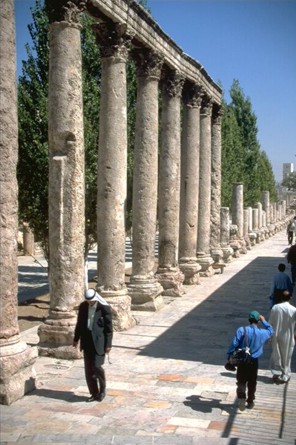
The old Roman streets were grouped along two main streets, following the wadi. Most of this city has been obliterated, but there are remains of a number of public buildings.
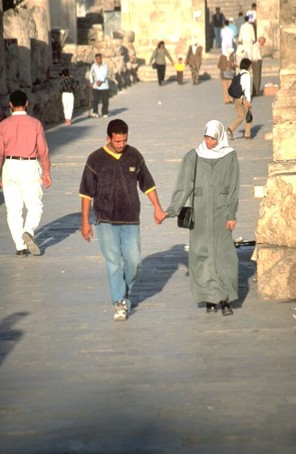
People still walk along the old Roman Road
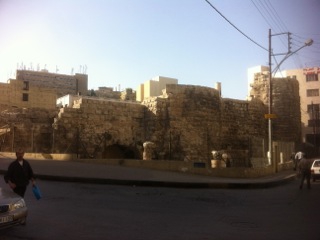
Nymphaeum Thanks Chad for sending us this photo.
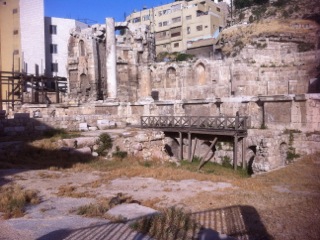
Nymphaeum
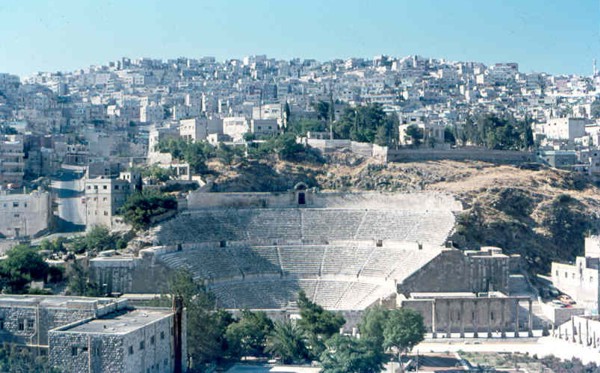
The Roman Theater, could seat around 6000 people.
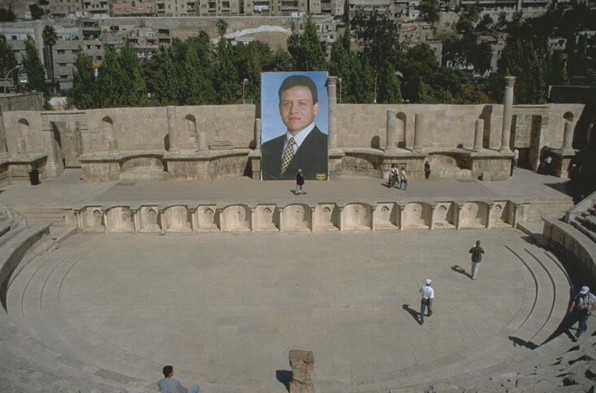
The theater is still used today for musical performances. The stage here is decorated with the king's picture.
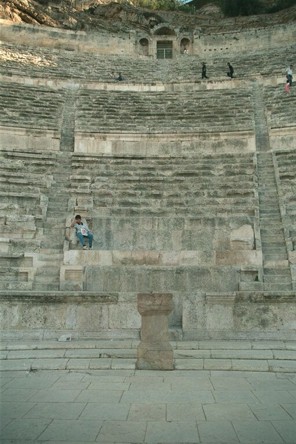
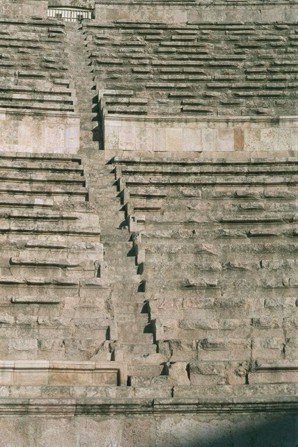
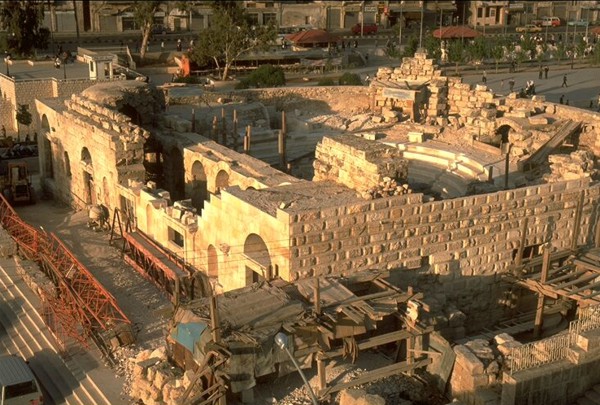
The Concert Hall shown here under restoration. This has now been completed.
The Citadel
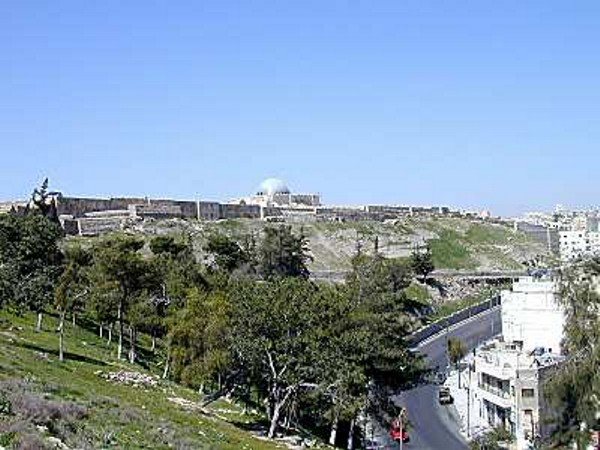
The ancient hill top fortified with walls

The walls of the citadel are now being excavated and restored.
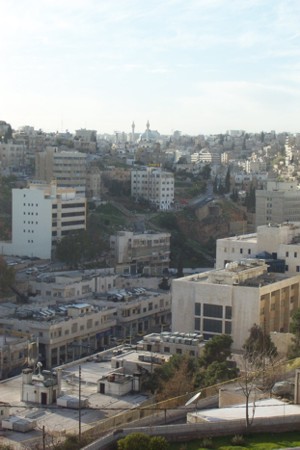
Looking towards Abdali from the citadel you can see the twin minarets of the main mosque in Amman.
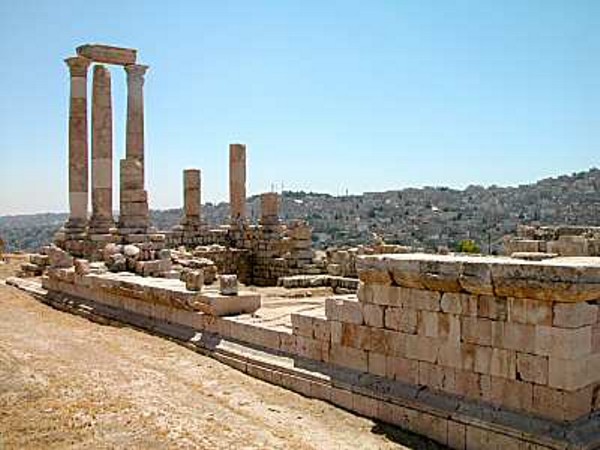
The Temple of Hercules This temple was 43 by 27 meters on a podium of solid blocks of pink limestone, facing east. 11 columns down each side, four across the front. (10 meters high) The colossal statue of a deity was made of marble and was around 10 meters high. The temple was dedicated to Hercules, and built between 161 and 166 AD.
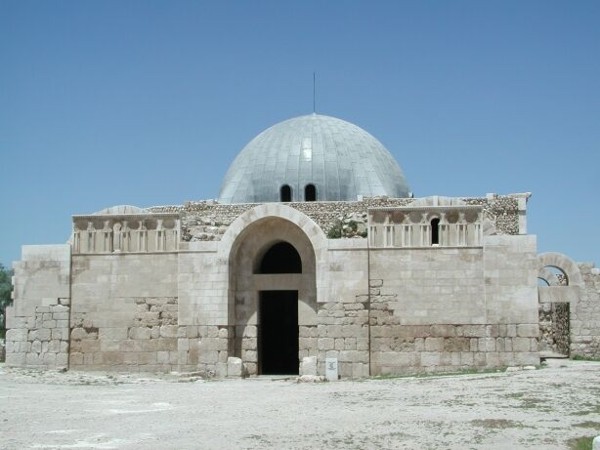
The Omayyed Palace (In Islamic times, 661 AD - 750 AD) Churches (St. Aelian was martyred here during the persecution under Diocletian in the early 4th century AD. During the Byzantine period, the city became a bishopric and several churches were built. The main cathedral was later converted into the Great Mosque. The Arabs invaded this area in 635 AD
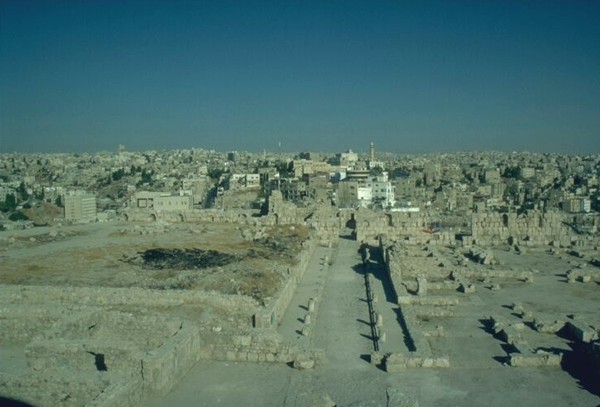
The Palace Courts The Palace Courts
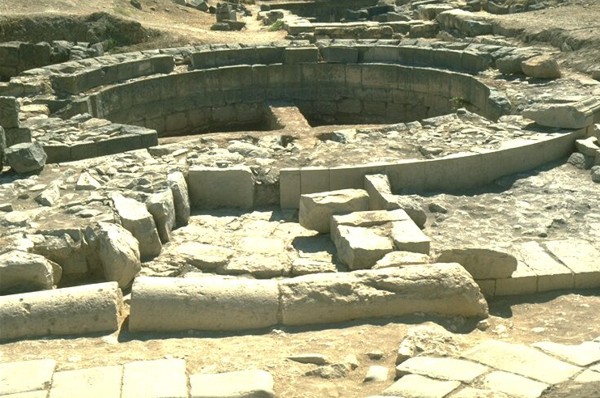
A large water cistern
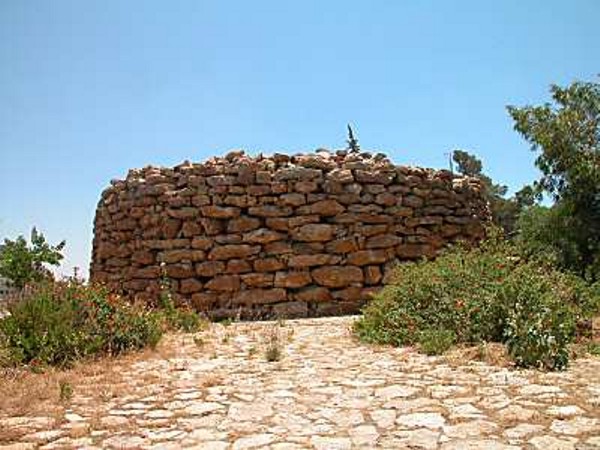
The Ammonite Fort on Jebal Amman beside the Ministry of Antiquities.

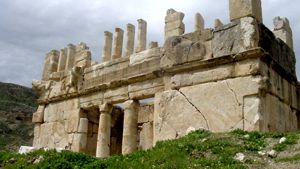
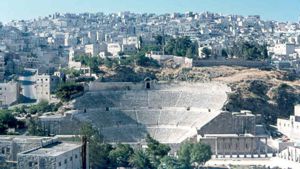
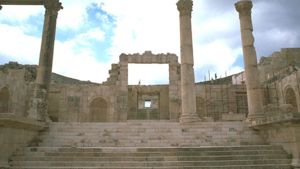
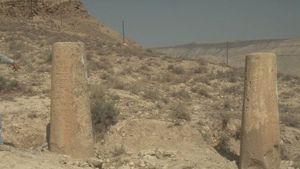
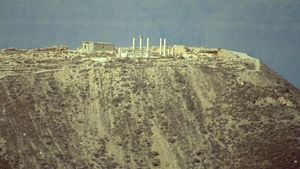
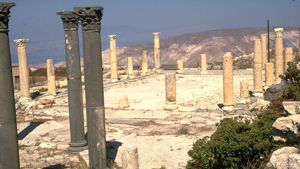
Page Discussion
Membership is required to comment. Membership is free of charge and available to everyone over the age of 16. Just click SignUp, or make a comment below. You will need a user name and a password. The system will automatically send a code to your email address. It should arrive in a few minutes. Enter the code, and you are finished.
Members who post adverts or use inappropriate language or make disrespectful comments will have their membership removed and be barred from the site. By becoming a member you agree to our Terms of Use and our Privacy, Cookies & Ad Policies. Remember that we will never, under any circumstances, sell or give your email address or private information to anyone unless required by law. Please keep your comments on topic. Thanks!